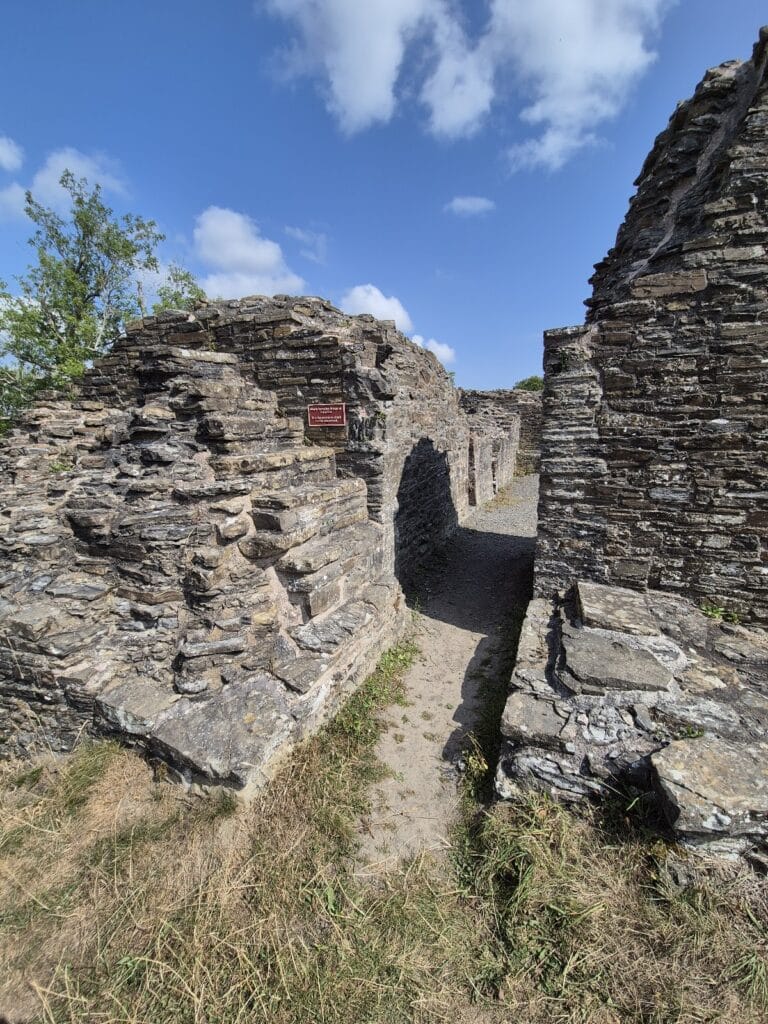Castell y Bere: A 13th-Century Welsh Castle in Gwynedd
Visitor Information
Google Rating: 4.8
Popularity: Low
Google Maps: View on Google Maps
Official Website: cadw.gov.wales
Country: United Kingdom
Civilization: Medieval European
Remains: Military
History
Castell y Bere is located near Llanfihangel-y-pennant in Wales, built by the Welsh principality of Gwynedd during the early 13th century. Its construction was part of a strategic effort to consolidate regional control by Llywelyn the Great, a prominent Welsh ruler.
The castle was established in the 1220s on a rocky hill overlooking the Dysynni Valley to assert Llywelyn the Great’s authority over the local population and to guard the southwestern boundary of Gwynedd. This position allowed it to oversee important mountain trade routes linking Gwynedd with neighbouring regions such as Powys Wenwynwyn and Deheubarth. Notably, Castell y Bere was the first stone castle built by Llywelyn, departing from the previously common Welsh practice of using undefended royal courts known as llysoedd. Following Llywelyn’s death in 1240, the principality began to lose ground, ceding eastern lands to Henry III of England in 1247.
In 1255, Llywelyn ap Gruffudd, the grandson of Llywelyn the Great, restored and expanded his family’s power. He undertook additions to the castle, including a southern tower that likely served as accommodation, reinforcing the site’s role within the wider effort to extend his influence across Wales. However, this period of resurgence ended abruptly during the conflict with Edward I of England. In 1282, Llywelyn ap Gruffudd was killed, and a year later, on April 25, 1283, English forces besieged and captured Castell y Bere.
Afterwards, Edward I appointed a team of masons and carpenters under a figure known as Master Bertram the Engineer to repair the damaged castle. Edward himself visited the site three times in 1284 and established a small borough nearby, probably to the east. Walter of Huntercombe was made constable and invested in new construction, including a chamber built at a cost of £47, possibly intended for royal use. Between 1286 and 1290, additional expenditures of £262 funded further enhancements, such as connecting walls to the south tower, an external barbican, and gate towers, bolstering the castle’s defenses.
In 1294, during a major Welsh uprising led by Madog ap Llywelyn, Castell y Bere faced another siege. Welsh forces likely captured the castle and set it ablaze. Following this event, the castle was abandoned and gradually fell into ruin. By the 16th century, the castle’s decay was recorded by the Welsh poet Gruffydd Hiraethog, who described it as destroyed. In the 1850s, efforts to clear the site of undergrowth allowed the first archaeological investigations, led by William Wynne. Later, in 1949, Charles Corbett placed Castell y Bere under state protection. Today, it is managed as a scheduled monument highlighting its origins as a Welsh princely stronghold.
Remains
Castell y Bere occupies a rocky outcrop surrounded by deep ditches cut directly into the stone on its south and east sides, providing formidable natural defenses. The main entrance is located on the west side and features a barbican—an outer defensive gateway likely constructed during the Edwardian improvements after the English conquest. This barbican includes two gate towers that overlook a flight of stone steps leading to the inner gate, adding layered security to the approach.
Within the castle’s courtyard lies a large well, essential for supplying water to the inhabitants. The courtyard also contains the remains of several internal buildings, though their exact construction dates remain uncertain. Noteworthy are the castle’s prominent towers: the north tower presents an apsidal shape, meaning it has a curved, D-shaped end, a style characteristic of early 13th-century Welsh military architecture. This tower may originally have housed a hall or a chapel, serving both defensive and domestic or religious functions.
The middle tower, which was initially the southernmost part of the fortifications, now serves as a passageway through the Edwardian ditch yard leading to the south tower. Like the north tower, the south tower is also apsidal in form and contains evidence of spacious living accommodations. Both towers lack fireplaces within their main chambers, instead relying on central hearths—open fires located in the center of rooms—to provide warmth.
Uniquely among early Welsh castles, Castell y Bere shows signs of decorative sculpture integrated into its structure, including carved statues of soldiers. These ornamental features, alongside decorative floor tiles, highlight an unusual level of artistry and embellishment for a military site of this period. Alongside Criccieth Castle, Castell y Bere stands out in Wales for possessing such decorative stonework. The historian Lawrence Butler has praised the castle for containing some of the finest stone carving produced in 13th-century Wales.










